Can Analytics Effect the Toronto Blue Jays Approach Like it has the Mets?
For the second time in the young, six-year existence of the New York Mets Citi Field, the team is moving the fences in. Why, you might ask?
Analytics.
According to New York Mets general manager Sandy Alderson, the team’s data showed some pretty specific benefits to bringing in the fences. Alderson used the example of Curtis Granderson, who only hit 18 home runs in his first season with the Mets. But according to Alderson, the team’s data revealed that Granderson would have hit seven more home runs this year with the expected fence changes.

FanSided
Beyond Granderson, the Mets hope that the altered fences – and a new hitting coach – will help jumpstart the power numbers of franchise third basemen David Wright. In 399 games at the pitcher friendly Citi Field, Wright has hit 34 fewer home runs than he did in 350 games at Shea Stadium.
Although it is difficult to predict how this will help the Mets opponents, it will – in theory – undoubtedly help opposing hitters just as much as it will the Mets’ hitters.
Regardless of the argument revolving around who the fence changing data helps more, you have to like the Mets “outside of the box” approach here.
So the question arises, could the Toronto Blue Jays possibly make a similar stadium adjustment at the Rogers Centre?
Well, when you look at the numbers at the Rogers Centre, you quickly see that the stadium ranks as one of the most hitter friendly ballparks in baseball. According to ESPN.com’s MLB Park Factor Stats, the Rogers Centre ranks third in total home runs, seventh in hits, ninth in runs and sixth in doubles.
Not bad numbers for any ballpark.
But, considering that we are in an era of pitching dominance where every inch at the plate counts, let’s take a closer look at the Rogers Centre park chart of batted balls in play to see if there is an inch we can find correlating to the hitters.
Fly balls hit at the Rogers Centre in 2014
red = pop outs, orange = fly outs, blue = home runs
(Source: katron.org)
Right away you will notice the amount of fly balls favours left field. With the Blue Jays lineup revolving around right-handed power hitters like Jose Bautista and Edwin Encarnacion, the amount of fly balls to left field should not surprise anybody. While this chart does give us a broad look at the fly balls hit in the Rogers Centre, it still doesn’t show us much about where the Blue Jays could use analytics to their advantage.
Let’s take a look at the same chart, but with just doubles and home runs only.
Home runs and doubles hit at the Rogers Centre in 2014
baby blue = doubles, dark blue = home runs
(Source: katron.org)
Looking at this chart, we can see that the power alleys in the Rogers Centre actually save more home runs, than they do help produce them.
Since moving the fences in at the Rogers Centre is not as easy structurally, as it is at Citi Field, the Jays could either extend the back stop and foul grounds along each base line in the hopes of producing a couple more outs a season. Or, they could find players that hit according to what the data of the Rogers Centre indicates; that dead-pull hitters have success in Toronto.
One player in particular that could be a realistic option for the Blue Jays this off-season is Colorado Rockies outfielder/first basemen Michael Cuddyer. At 35 years old, Cuddyer is not exactly a young player anymore, and his slew of injuries makes him a risk to sign, but going strictly off the data here, Cuddyer makes for a nice fit in the hitter friendly confines of the Rogers Centre.
Here’s a look at Cuddyer’s hits at Coors Field overlayed on the Rogers Centre from the 2013 and 2014 seasons.
Hits by Michael Cuddyer overlayed on Rogers Centre in 2013
red = pop outs, light red = line outs, orange = fly outs, baby blue = doubles, royal blue = triples, dark blue = home runs
(Source: katron.org)
Hits by Michael Cuddyer overlayed on Rogers Centre in 2014
red = pop outs, light red = line outs, orange = fly outs, baby blue = doubles, royal blue = triples, dark blue = home runs
(Source: katron.org)
Again, Cuddyer’s health is a major factor here, but from the data, Cuddyer would have hit 16 home runs at the Rogers Centre in 2013, and 9 home runs in 2014. The switch from Coors Field to the Rogers Centre would give Cuddyer an increase of five more home runs in 2013 and three more in 2014.
Based off of that data alone, you could make a case that a player like Cuddyer could give the Blue Jays an instant upgrade at a position like first base or designated hitter.
While the Blue Jays probably can’t make the same park adjustments as the New York Mets can, they can instead find players who fit the model of the Rogers Centre. A quick skim of a couple analytics like balls in play charts shows us a couple ways the Blue Jays can enhance their team.
Although the Blue Jays offence is not as anemic as the Mets, there are still ways this team can improve their offence.
What do you think Jays fans? Can the Blue Jays use analytics to help improve their offence? Let us know your thoughts in the comments below.
